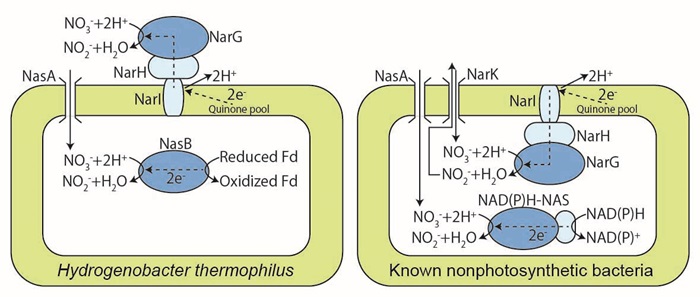Dr. Masafumi Kameya's study appeared online in Molecular Microbiology on 27 July, 2017.
Article title: Nitrate reductases in Hydrogenobacter thermophilus with evolutionarily ancient features: distinctive localization and electron transfer
Nitrogen is an essential element in cellular components for all life, and it is also utilized as an energy source in many organisms. To elucidate the evolutionary origin of this metabolism, the study identified and characterized nitrate reductases in Hydrogenobacter thermophilus, a bacterium which preserves many traces of ancient metabolism. These enzymes exhibited novel features that have been never reported in other bacteria. The results suggested that the energy synthesis in primitive life was less efficient that those in many modern bacteria, and that ferredoxin, a primitive protein harboring Fe-S cluster(s), is used as an electron carrier in wider range of metabolism than previously thought. These findings will lead to understanding of the evolutionary processes from primitive to modern metabolism.

| Journal: | Molecular Microbiology |
| Title of original paper | Nitrate reductases inHydrogenobacter thermophiluswith evolutionarily ancient features: distinctive localization and electron transfer |
| Authors: | Masafumi Kameya1,2, Haruna Kanbe1, Yasuo Igarashi1, Hiroyuki Arai1, and Masaharu Ishii1 |
| Affiliations | 1 Department of Biotechnology, The University of Tokyo, Japan and 2 Earth-Life Science Institute, Tokyo Institute of Technology, Japan |
| DOI | 10.1111/mmi.13756 |
| Online published | 27 July, 2017 |
ELSI Researchers|Masafumi Kameya
